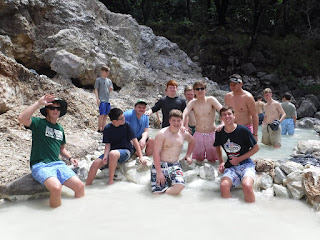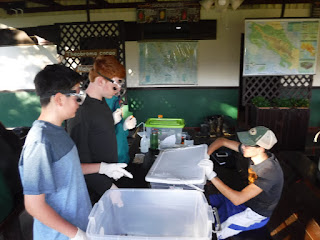Perfect ending to a great trip to Costa Rica. - Jake Claypool

Final day at the beach... Go Rocks! The group's day began with a quick, slightly obscure, breakfast. We then we dived straight into a hike around the Horizontes research center, where we observed various species and their symbiotic relationships. Two species that lived in this state of symbiosis were the Acacia tree and the Pseudomerymex ants. The Pseudomyrmex ants lived within the sharp, protective thorns which were provided by the Acacia tree. In return, the ants provided a natural herbicide which prevented other plans from choking out the Acacia. After we returned from the hike we cleaned off our boots, returned our boots for the last time, and assisted the research center with their forest restoration process. My group, which consisted of myself, John Vanetti, Madison Miller, and Chloe Martin, were given four trees to plant, which we proceeded to name. These names were rather silly, so I made the executive decision to erase them from my memory. After the planting, we had








